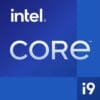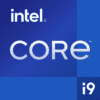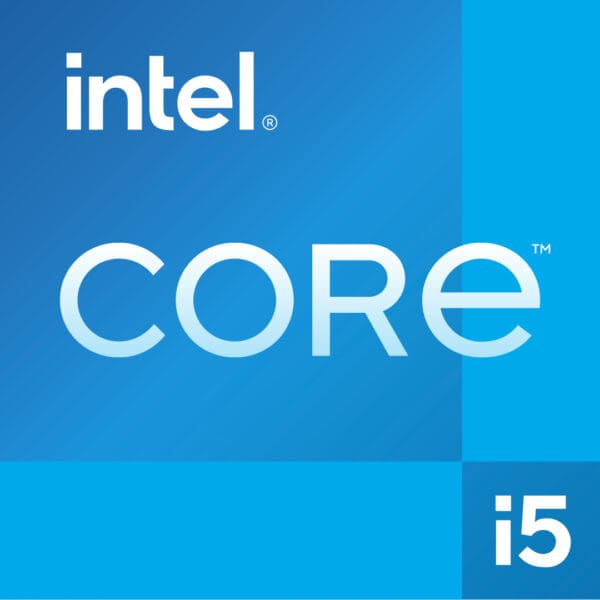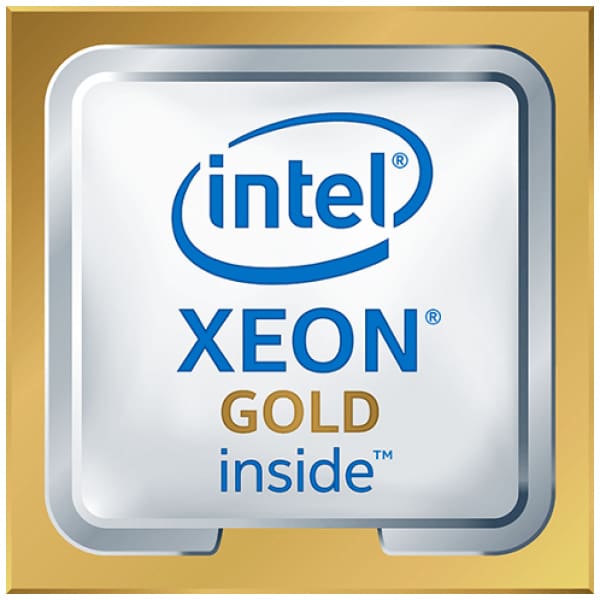Intel Core i9-11900KF processor 3.5 GHz
This item is currently unavailable for next day delivery, however you may still order this item as a back-order?
Intel Core i9-11900KF CPU, 1200, 3.5 GHz (5.3 Turbo), 8-Core, 125W, 14nm, 16MB Cache, Overclockable, Rocket Lake, No Graphics, NO HEATSINK/FAN
Description
Intel® Turbo Boost Technology
Intel® Turbo Boost Technology dynamically increases the processor’s frequency as needed by taking advantage of thermal and power headroom to give you a burst of speed when you need it, and increased energy efficiency when you don’t.
Intel® Hyper-Threading Technology
Intel® Hyper-Threading Technology (Intel® HT Technology) delivers two processing threads per physical core. Highly threaded applications can get more work done in parallel, completing tasks sooner.
Intel® Virtualization Technology (VT-x)
Intel® Virtualization Technology (VT-x) allows one hardware platform to function as multiple “virtual” platforms. It offers improved manageability by limiting downtime and maintaining productivity by isolating computing activities into separate partitions.
Intel® Virtualization Technology for Directed I/O (VT-d)
Intel® Virtualization Technology for Directed I/O (VT-d) continues from the existing support for IA-32 (VT-x) and Itanium® processor (VT-i) virtualization adding new support for I/O-device virtualization. Intel VT-d can help end users improve security and reliability of the systems and also improve performance of I/O devices in virtualized environments.
Intel® VT-x with Extended Page Tables (EPT)
Intel® VT-x with Extended Page Tables (EPT), also known as Second Level Address Translation (SLAT), provides acceleration for memory intensive virtualized applications. Extended Page Tables in Intel® Virtualization Technology platforms reduces the memory and power overhead costs and increases battery life through hardware optimization of page table management.
Intel® 64
Intel® 64 architecture delivers 64-bit computing on server, workstation, desktop and mobile platforms when combined with supporting software.¹ Intel 64 architecture improves performance by allowing systems to address more than 4 GB of both virtual and physical memory.
Instruction Set
An instruction set refers to the basic set of commands and instructions that a microprocessor understands and can carry out. The value shown represents which Intel’s instruction set this processor is compatible with.
Instruction Set Extensions
Instruction Set Extensions are additional instructions which can increase performance when the same operations are performed on multiple data objects. These can include SSE (Streaming SIMD Extensions) and AVX (Advanced Vector Extensions).
Idle States
Idle States (C-states) are used to save power when the processor is idle. C0 is the operational state, meaning that the CPU is doing useful work. C1 is the first idle state, C2 the second, and so on, where more power saving actions are taken for numerically higher C-states.
Enhanced Intel SpeedStep® Technology
Enhanced Intel SpeedStep® Technology is an advanced means of enabling high performance while meeting the power-conservation needs of mobile systems. Conventional Intel SpeedStep® Technology switches both voltage and frequency in tandem between high and low levels in response to processor load. Enhanced Intel SpeedStep® Technology builds upon that architecture using design strategies such as Separation between Voltage and Frequency Changes, and Clock Partitioning and Recovery.
Thermal Monitoring Technologies
Thermal Monitoring Technologies protect the processor package and the system from thermal failure through several thermal management features. An on-die Digital Thermal Sensor (DTS) detects the core’s temperature, and the thermal management features reduce package power consumption and thereby temperature when required in order to remain within normal operating limits.
Intel® Identity Protection Technology
Intel® Identity Protection Technology is a built-in security token technology that helps provide a simple, tamper-resistant method for protecting access to your online customer and business data from threats and fraud. Intel® IPT provides a hardware-based proof of a unique user’s PC to websites, financial institutions, and network services; providing verification that it is not malware attempting to login. Intel® IPT can be a key component in two-factor authentication solutions to protect your information at websites and business log-ins.
Intel® Deep Learning Boost (Intel® DL Boost)
A new set of embedded processor technologies designed to accelerate AI deep learning use cases. It extends Intel AVX-512 with a new Vector Neural Network Instruction (VNNI) that significantly increases deep learning inference performance over previous generations.
Intel® Thermal Velocity Boost
Intel® Thermal Velocity Boost (Intel® TVB) is a feature that opportunistically and automatically increases clock frequency above single-core and multi-core Intel® Turbo Boost Technology frequencies based on how much the processor is operating below its maximum temperature and whether turbo power budget is available. The frequency gain and duration is dependent on the workload, capabilities of the processor and the processor cooling solution.
| Feature | Feature Value |
|---|---|
| Processor family | Intel® Core™ i9 |
| Processor cores | 8 |
| Processor socket | LGA 1200 (Socket H5) |
| Processor lithography | 14 nm |
| Box | Y |
| Processor manufacturer | Intel |
| Processor model | i9-11900KF |
| Processor base frequency | 3.5 GHz |
| Processor operating modes | 64-bit |
| Processor generation | 11th gen Intel® Core™ i9 |
| Component for | PC |
| Processor threads | 16 |
| System bus rate | 8 GT/s |
| Processor boost frequency | 5.3 GHz |
| Processor cache | 16 MB |
| Processor cache type | Smart Cache |
| Thermal Design Power (TDP) | 125 W |
| Configurable TDP-down frequency | 3 GHz |
| Configurable TDP-down | 95 W |
| Memory bandwidth supported by processor (max) | 50 GB/s |
| Processor ARK ID | 212321 |
| Memory channels | Dual-channel |
| Maximum internal memory supported by processor | 128 GB |
| Memory types supported by processor | DDR4-SDRAM |
| Memory clock speeds supported by processor | 3200 MHz |
| ECC | N |
| Memory bandwidth (max) | 50 GB/s |
| On-board graphics card | N |
| Discrete graphics card | N |
| On-board graphics card model | Not available |
| Discrete graphics card model | Not available |
| Execute Disable Bit | Y |
| Idle States | Y |
| Thermal Monitoring Technologies | Y |
| Market segment | Desktop |
| Use conditions | PC/Client/Tablet |
| Maximum number of PCI Express lanes | 20 |
| PCI Express slots version | 4.0 |
| PCI Express configurations | 1×16+1×4, 2×8+1×4, 1×8+3×4 |
| Supported instruction sets | SSE4.1, SSE4.2, AVX 2.0, AVX-512 |
| Scalability | 1S |
| CPU configuration (max) | 1 |
| Embedded options available | N |
| Export Control Classification Number (ECCN) | 5A992CN3 |
| Commodity Classification Automated Tracking System (CCATS) | G167599 |
| Intel® Hyper Threading Technology (Intel® HT Technology) | Y |
| Intel® Identity Protection Technology (Intel® IPT) | Y |
| Intel® Turbo Boost Technology | 2.0 |
| Intel® AES New Instructions (Intel® AES-NI) | Y |
| Enhanced Intel SpeedStep Technology | Y |
| Intel Trusted Execution Technology | N |
| Intel® Thermal Velocity Boost | Y |
| Intel® Turbo Boost Max Technology 3.0 frequency | 5.2 GHz |
| Intel® Turbo Boost Technology 2.0 frequency | 5.1 GHz |
| Intel® Gaussian & Neural Accelerator (Intel® GNA) 2.0 | Y |
| Intel® Thermal Velocity Boost Temperature | 70 °C |
| Intel® Thermal Velocity Boost Frequency | 5.3 GHz |
| Intel VT-x with Extended Page Tables (EPT) | Y |
| Intel® Secure Key | Y |
| Intel Stable Image Platform Program (SIPP) | N |
| Intel® OS Guard | Y |
| Intel Software Guard Extensions (Intel SGX) | N |
| Intel 64 | Y |
| Intel Virtualization Technology (VT-x) | Y |
| Intel Virtualization Technology for Directed I/O (VT-d) | Y |
| Intel Turbo Boost Max Technology 3.0 | Y |
| Intel® Optane™ Memory Ready | Y |
| Intel® Boot Guard | Y |
| Intel® Deep Learning Boost (Intel® DL Boost) | Y |
| Intel® vPro™ Platform Eligibility | N |
| Tjunction | 100 °C |
| Supported memory types | DDR4-SDRAM |
| Harmonized System (HS) code | 85423119 |
| Package type | Retail box |
| Processor package size | 37.5 x 37.5 mm |
| Maximum internal memory | 128 GB |
| Target market | Gaming, Content Creation |
| Launch date | Q1’21 |
| Status | Launched |
Additional information
| Processor family | Intel® Core™ i9 |
|---|---|
| Processor socket | LGA 1200 (Socket H5) |
| Box | Y |
| Processor model | i9-11900KF |
| Processor operating modes | 64-bit |
| Component for | PC |
| System bus rate | 8 GT/s |
| Processor cache | 16 MB |
| Thermal Design Power (TDP) | 125 W |
| Configurable TDP-down | 95 W |
| Processor ARK ID | 212321 |
| Memory bandwidth (max) | 50 GB/s |
| Discrete graphics card | N |
| Idle States | Y |
| Market segment | Desktop |
| PCI Express configurations | 1×16+1×4, 2×8+1×4, 1×8+3×4 |
| Scalability | 1S |
| Embedded options available | N |
| Intel® Secure Key | Y |
| Intel® OS Guard | Y |
| Intel 64 | Y |
| Tjunction | 100 °C |
| Harmonized System (HS) code | 85423119 |
| Processor package size | 37.5 x 37.5 mm |
| Target market | Gaming, Content Creation |
| Status | Launched |
| Processor cores | 8 |
| Processor lithography | 14 nm |
| Processor manufacturer | Intel |
| Processor base frequency | 3.5 GHz |
| Processor generation | 11th gen Intel® Core™ i9 |
| Processor threads | 16 |
| Processor boost frequency | 5.3 GHz |
| Processor cache type | Smart Cache |
| Memory channels | Dual-channel |
| ECC | N |
| On-board graphics card | N |
| Execute Disable Bit | Y |
| Use conditions | PC/Client/Tablet |
| PCI Express slots version | 4.0 |
| Supported instruction sets | SSE4.1, SSE4.2, AVX 2.0, AVX-512 |
| CPU configuration (max) | 1 |
| Intel® Boot Guard | Y |
| Supported memory types | DDR4-SDRAM |
| Package type | Retail box |
| Maximum internal memory | 128 GB |
| Launch date | Q1'21 |








